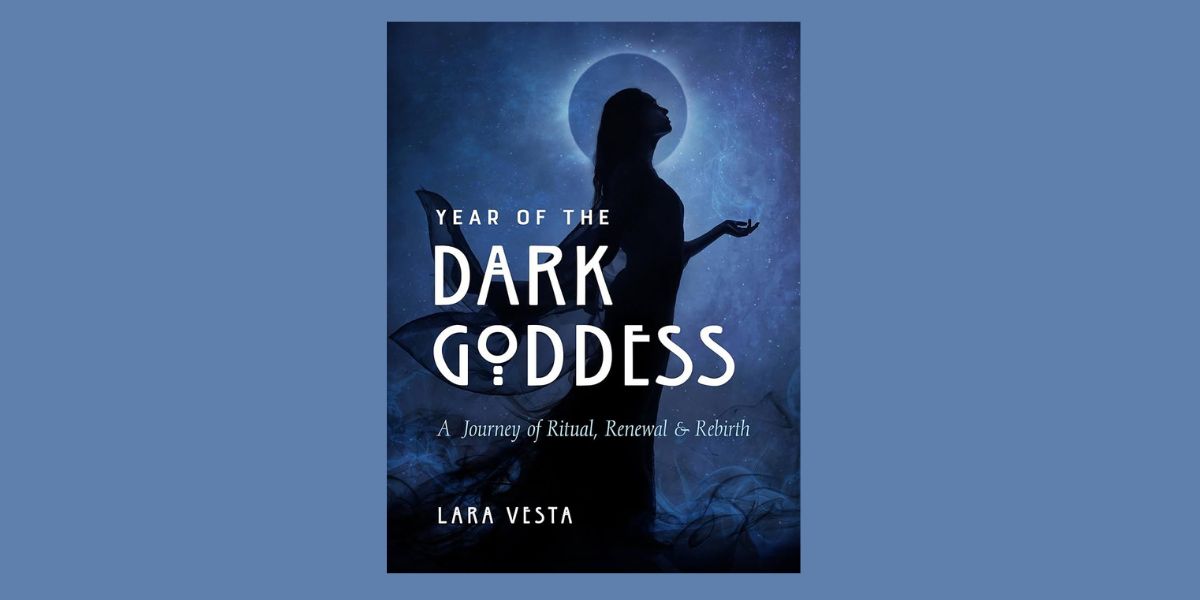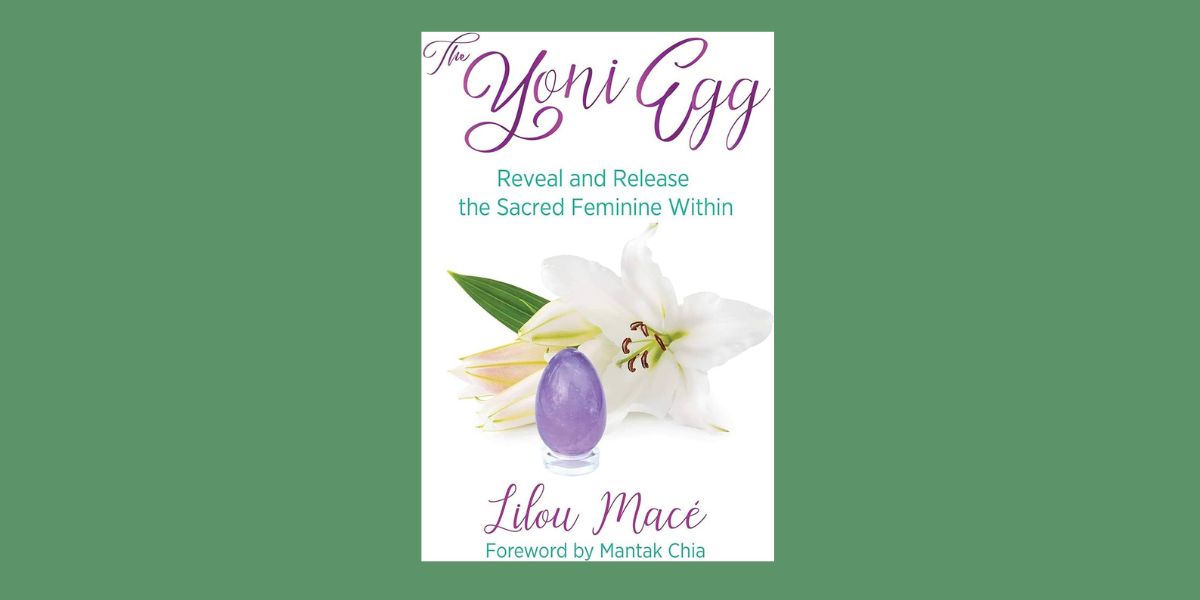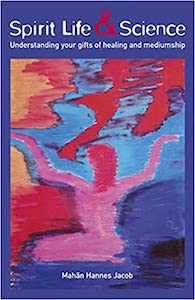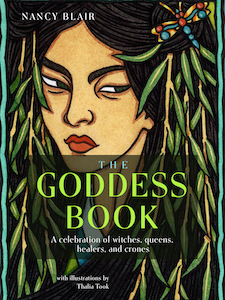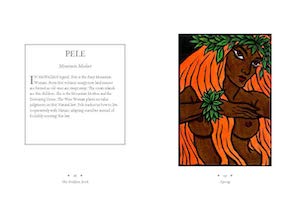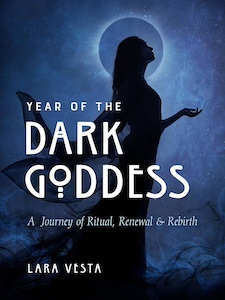
Year of the Dark Goddess: A Journey of Ritual, Renewal & Rebirth, by Lara Vesta
Weiser Books, 978- 578638277, 232 pages, May 2024
Who is the Dark Goddess?
“She is what we fear most -change, hardship- and what we long for most -to make meaning from challenge, to be transformed by difficulty, to find purpose in our wending path. When we bring the descents of our lives into awareness and follow the initiatory patterns into cycles of regenerative growth, we can find the ancient mystery of our ancestral stories restorative. We may lean into the sacred patter and be empowered.”1
Although Year of the Dark Goddess: A Journey of Ritual, Renewal & Rebirth by Lara Vesta was released in May of this year, somehow it seems timely and absolutely beneficial to bring attention to this treasure. Perhaps it is the time of year and the thinning of the veils and of connection to all that is of the realm of the Underworld and has unique powers within the dark. Perhaps it is because we are in a space of evolution where challenges seem impossible and direction is not clear. Or, perhaps it is because the Dark Goddess has her way of interjecting her wisdom when it is most needed. Regardless, this book is a guide to stepping into a journey back to one’s true strength.
Year of the Dark Goddess is a rich and nuanced read that requires of the reader the courage to face those aspects of self that we tend to overlook as they are buried in the busy-ness and distraction of a less than authentic life. The scope of intention for this read is one of creating new connections to the Dark Goddess and using these as a path of self-initiation, change and growth.
This book is organized into three parts, each building upon a deepening of descent into practices that will produce change; the degree of transformation dependent on the commitment and intention offered to each action, working and ritual as the reader methodically engages the physical/mundane and the spiritual/magical.
The Prologue serves as a poignant rendering of our deepest desire to learn how to navigate the dark, and what is necessary to navigate a ceremonial year that becomes a rite of passage into wisdom, trust and transformation. The reader is introduced to this title as a “story” which we all have access to and is deserving of our intention to become the Myth-teller of our own stories.
“The story you are about to receive is a story present in all of our peoples, a story spread with many names and places, a story with a form recognizable in the hard things life brings…. When the trials descend above all, you must not lose hope. This plan has a purpose, and we have a path. Even in the darkness of the Underworld, the realm of the Dark Goddess when we have received the medicine of her story, the way is always clear.”2
“Part 1: The Dark Goddess Awaits” provides the reader with all the information necessary to move effectively through the many workings, rituals, and other self-actualizing tasks that comprise a subject which is broad and vast in its depth and use. There is a very thought-filled approach that Vesta has rendered and it is clearly evident that what has been included in each section has been proven to be effective at multiple levels.
Within the section “Essential Elements of the Dark Goddess Year”, there are tools and skills that will provide the reader as they cultivate a resonant understanding in support of self-initiation. The how-tos of the components that subsequent chapters will echo throughout the year are given reason, purpose and practical application, enabling the reader to set forth on this journey ready for what lay ahead and open to the possibilities.
These foci include: Begin with the Body, Rooting Into the Story, Earth Rhythms, Medicine of the Quarter, a Quarter Challenge, Seasonal Ceremony, and more. For example, the starting practice of each quarter, Begin with the Body serves as both a necessary anchoring in the physical that is required before extending that reach into the magickal and spiritual realms and takes the form of Herbal Infusions, Womb Wisdom For Everyone, Flower Bathing, and Plant Blessing and Cleansing, each aligned with its own specific seasonal quarter.
I especially liked the ending sections of Part 1 which includes A Ceremony of Preparation and Dedication to the Journey to the Mythic Underworld seeded by a guided contemplative to be used as the reader journeys into the Underworld.
“The purpose of imagining the Underworld prior to the rite of passage year is to familiarize ourselves with the chthonic processes we transition though in a rite of passes, to discover the resources and wisdom available in the depths and to begin to trust the representational cycles of death and rebirth necessary for transformation.”3
Having been given supportive and usable tools, the reader now embarks on the specific ceremonial seasonal work to be accomplished outlined in “Part II: The Year of the Dark Goddess”. Vesta separates the journey into quarters, beginning with the Winter Solstice through the Spring Equinox. Each of the remaining quarters moves in order capturing the Spring Equinox to Summer Solstice, Summer Solstice to Autumnal Equinox, and concluding with Autumnal Equinox to Winter Solstice. This very organic approach makes for the potential of a multitude of traditional and modern correspondences and themes to unfold as the reader follows a structured path of intention and purpose.
The final steps in this journey conclude appropriately with formal acknowledgement of all that has transpired and arisen for the reader in following their course. “Part III: Crafting Your Ritual” offers the reader guidance on reflecting on the year and integrating what has been gained of this journey into a personal rite of passage, a ritual of self-initiation. The meaning of each of the actions and callings scripted within ceremonial ritual are explained in detail, ensuring that the reader/initiate is clear and purposeful in the underlying power held in the actions taken versus simply repeating verbatim and without understanding what magick is being crafted. There is a lovely ceremony template provided following the details of the “why we do this” that is complete and effective in claiming the change that has occurred at all levels of being.
Would I Recommend?
Year of the Dark Goddess: A Journey of Ritual, Renewal & Rebirth is crafted exactly as it should be to provide the reader with rich experience, a spectrum of knowledge inclusive of many magickal disciplines and clear and direct guidance towards growth in one’s practice. This book offers the invitation to become one who creates their story of rebirth, One who weaves the magick of the many Dark Goddess through the order of the seasonal wheel. The one who courageously meets the darkest of challenges with the wisdom gained in the journeys taken in their ceremonial rite of passage.
I would recommend this book to any who follow a path of spirit, magick, witchcraft . And, it is also a title that is applicable to those looking for a deeper meaning in their purpose with every perceived insurmountable challenge. The message is one of power, strength, and hope in the knowledge that you are the great initiator of your life’s experience, reminding readers that you have the power and inner wisdom to navigate through darkness as well as times of light. To know the Dark Goddess is to be able to stand in the liminal spaces and have no fear of what lay beyond, but rather, to command its energy.
The quote below from the final page of this title’s journey is both a preview of what the reader will aspire towards in moving through the Year of the Dark Goddess, as well as a fitting closure for the potential of outcome that is held between its pages:
“And now, powerful one, initiate, caretaker of the world and wild: You rebegin wearing the mantle of the Mythteller, opening your heart to the new-old story pouring through your bones. It is your birthright , it belongs with you, to you, through you.”[efn_notepage 211[/efn_note]
About the Author: Lara Vesta
Lara Vesta, MFA, is an artist, storyteller, and educator. She is the author of Wild Soul Runes: Reawakening the Ancestral Feminine, The Moon Divas Guidebook, and The Moon Divas Oracle Book. A certified Celebrant with the Celebrant Institute and Foundation, and a former PhD student in philosophy and religion, she has spent over a decade studying ritual in diverse communities and facilitating rituals for individuals and groups in hundreds of different environments. She also has been through multiple challenging rite-of-passage transitions due to disabling chronic illness, which framed her understanding of the Dark Goddess work. In 2015 she created the Wild Soul School, an online educational community offering classes in personal empowerment, ancestral connection, self-initiation, and ritual practice.
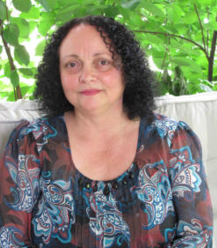
Robin Fennelly is an Elder within the Assembly of the Sacred Wheel Tradition [www.sacredwheel.org]. She is a dancer, teacher, astrologer, author, ritualist and seeker of all things of a spiritual nature. Her writings and classes incorporate a deep understanding of Eastern practice and Western Hermetics and bring a unique perspective towards integration and synthesis of the Divine and Mundane natures of our being. She is a mother of five and lives in Eastern PA with her husband of 45+ years.
